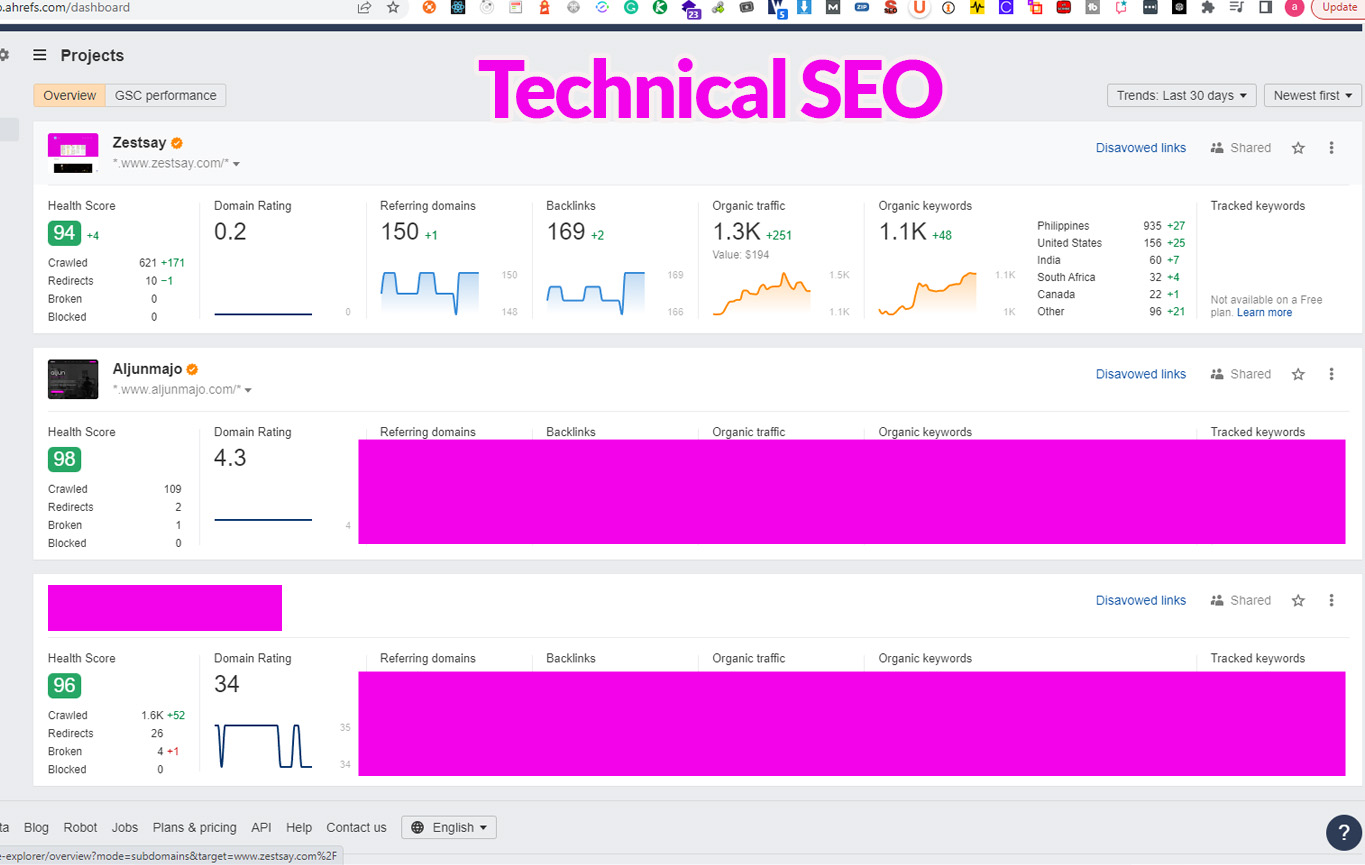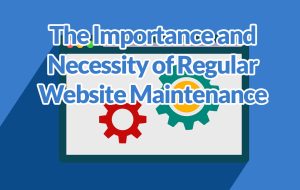Technical SEO Audit

In today’s digital landscape, it’s no secret that having a solid online presence is crucial for businesses to thrive. But what if you’ve done everything right, from creating engaging content to optimizing your website for user experience, yet still struggle to climb those Google rankings? Well, it’s time to dig deeper and look at your site’s nuts and bolts through a technical SEO audit.
A technical SEO audit may sound intimidating, but don’t worry – it’s not as daunting as it seems. It is essential to identify any underlying issues that might hold your website back to its full potential. By evaluating and fine-tuning various aspects of your site’s structure and performance, you can enhance its visibility on search engines and ultimately drive more traffic (and conversions). So let’s dive in and explore what a technical SEO audit entails and how you can improve your site today!
Table of Contents
Evaluating Site Structure And Navigation
Evaluating the site structure and navigation is crucial to conducting a technical SEO audit. A well-organized website with straightforward navigation provides a better user experience and helps search engines understand the content hierarchy and importance of each page. To assess the site structure, start by examining the overall layout, including header menus, sidebars, and footer links. Ensure that essential pages are easily accessible and logically grouped together to make it easier for users to find what they’re looking for.
Another vital component in evaluating site structure is analyzing internal linking strategies. These links help distribute link equity across your website while guiding users to relevant content. Make sure that you have an adequate number of internal links on each page and that they’re pointing to high-value pages. Additionally, avoid overusing exact match anchor text, which may appear spammy to search engines. Instead, use natural language variations in your anchor text to create a more organic linking profile. By addressing any issues found in these areas, you’ll be well on your way to improving your website’s overall SEO health.
Analyzing Page Load Speed And Performance
Delving deeper into the intricacies of technical SEO, one cannot overlook the significance of analyzing a website’s page load speed and performance. A website that takes too long to load will frustrate users and hinder search engines from effectively crawling and indexing its content. As a result, such websites may witness a decline in their organic traffic and overall visibility in search engine results pages (SERPs). Therefore, it is vital for webmasters to regularly assess their site’s page load speed and adopt necessary measures to enhance its performance.
Several online tools can be used to gauge a website’s loading speed, such as Google PageSpeed Insights, GTmetrix, and WebPageTest. These tools offer invaluable insights into various factors affecting the website’s performance while providing recommendations for improvement. Some common suggestions include optimizing images, minifying JavaScript and CSS files, enabling browser caching, and implementing a content delivery network (CDN) for better resource distribution. By addressing these issues systematically, webmasters can ensure an enhanced user experience, improving search rankings and increasing organic website traffic.
Identifying And Fixing Broken Links
One common issue that can negatively impact a website’s SEO is the presence of broken links. Broken links lead to non-existent or inaccessible pages, causing users to encounter error messages and ultimately leading to poor user experience. Not only do broken links frustrate site visitors, but they also signal to search engines that your website is poorly maintained or outdated. Consequently, this can hurt your search engine rankings and reduce your website’s organic traffic.
To identify and fix broken links on your website, you’ll need to conduct a thorough crawl of all its pages using a reliable tool such as Screaming Frog or Ahrefs. These tools will list broken URLs and the pages where these links are found. Once you have this information, you can update the link with a relevant, working URL or remove it altogether if it’s no longer necessary. By addressing these issues promptly, you’ll improve user experience and help maintain your website’s credibility in the eyes of both visitors and search engines.
Assessing Mobile Friendliness
Having addressed the issue of broken links, it’s time to shift our focus to another crucial aspect of a technical SEO audit: assessing mobile friendliness. With most web traffic now originating from mobile devices, ensuring that your website is optimized for these users is essential for both user experience and search engine ranking.
To assess mobile friendliness, use Google’s Mobile-Friendly Test tool, which provides valuable insights into how well your website performs on mobile devices. This tool identifies any issues and offers suggestions on how to fix them. Additionally, examine website elements like font size, button spacing, and navigational structure – all of which contribute significantly to a seamless mobile user experience. Don’t forget to consider page load speed, as this factor significantly impacts both user experience and search engine ranking. Aim for a load time under three seconds to meet industry standards and user expectations.
Ensuring Proper Indexing And Crawlability
One of the most crucial aspects of a technical SEO audit is ensuring that search engines easily index and crawl your website. This means making certain that search engine bots can effortlessly access, understand, and navigate through your website’s content. If search engines are unable to crawl and index your site properly, it could negatively impact your organic search rankings and ultimately lead to less traffic.
To guarantee proper indexing and crawlability, there are several factors you should consider. First, ensure that your website’s robots.txt file is not accidentally blocking important pages from being crawled by search engine bots. Additionally, make sure that your site’s XML sitemap is updated regularly and submitted to major search engines like Google and Bing. It’s also essential to monitor the performance of your website using tools such as Google Search Console or Bing Webmaster Tools, as these can provide valuable insights into any potential crawl errors or issues affecting indexing. By addressing these concerns promptly, you’ll be well on your way to improving your site’s overall SEO performance.
Frequently Asked Questions
What Is The Role Of XML Sitemaps In A Technical Seo Audit, And How Can I Create And Submit One For My Website?
XML sitemaps are crucial in a technical SEO audit as they help search engines like Google effectively crawl, index, and understand your website’s content. To create and submit one for your site, you can use various online tools or plugins to generate the sitemap in XML format. Once created, upload it to your website’s root directory and add the sitemap URL to your robots.txt file. Finally, submit the sitemap through Google Search Console to ensure proper indexing and better visibility in search results.
How Does The Usage Of Javascript, CSS, And Other Web Technologies Impact My Site’s SEO Performance, And What Should I Consider When Implementing These Elements?
The usage of JavaScript, CSS, and other web technologies can significantly impact your site’s SEO performance, as search engines like Google have become more proficient at crawling and indexing these elements. When implementing these technologies, it’s important to consider factors such as page load speed, mobile-friendliness, and accessibility. Ensure that critical content and navigation are available without relying solely on JavaScript, optimize your CSS delivery to reduce render-blocking issues, and use progressive enhancement techniques to provide a functional experience for users regardless of their device or browser capabilities. By carefully considering the implementation of these elements, you can improve your site’s user experience and potentially boost its ranking in search results.
How Do I Handle Duplicate Content Issues During A Technical SEO Audit, And What Are Some Best Practices To Avoid Or Resolve Them?
When handling duplicate content issues, it’s essential to identify and address the causes to maintain your site’s SEO performance. Best practices for avoiding or resolving duplicate content issues include using 301 redirects to guide users and search engines to the original content, implementing canonical tags on similar pages to signal search engines which version is the preferred one, and creating unique meta descriptions and title tags for each page. Additionally, use the same URL structure throughout your site consistently and avoid publishing identical or near-identical content across multiple pages.
What Are Some Important On-Page SEO Elements To Evaluate During A Technical SEO Audit, Such As Meta Tags, Header Tags, And Keyword Usage?
When evaluating important on-page SEO elements, examining meta tags, header tags, and keyword usage is essential. Meta tags provide information about a web page’s content and are used by search engines to understand its relevance to user queries. Properly optimizing title and description tags can help improve click-through rates from search results. Header tags (H1-H6) help structure your content and indicate hierarchy, making it easier for users and search engines to navigate. Additionally, strategically incorporating keywords into your content, URLs, and image alt text can improve relevancy and rankings, but avoid overstuffing or unnatural usage as this may lead to penalties from search engines.
How Can I Identify And Address Any Security Issues, Such As SSL/TLS Implementation And Mixed Content Warnings, That May Affect My Site’s Search Engine Rankings During A Technical SEO Audit?
To identify and address security issues affecting your site’s search engine rankings, ensure your website has a valid SSL/TLS certificate, which encrypts data between the user’s browser and your server. This can be verified using online SSL checkers or through your hosting provider. Next, tackle any mixed content warnings by ensuring all resources (images, scripts, stylesheets) are loaded via HTTPS instead of HTTP. You can find these insecure elements using browser developer tools or specialized online scanners. Resolving these security concerns improves user trust and positively impacts your search engine ranking, as significant search engines prioritize secure websites in their algorithms.
Conclusion
In conclusion, a meticulous technical SEO audit elevates your website’s search engine ranking and overall performance. By diligently addressing elements such as XML sitemaps, web technologies, duplicate content, on-page SEO factors, and security concerns, you will lay the groundwork for a remarkably optimized site.
It is crucial to remember that the secret to triumphant SEO lies in consistent monitoring and enhancement. By continually evaluating your website’s performance, you will not only stay ahead of your competitors but also ensure an exceptional user experience for your visitors.
Should you require the services of a highly skilled Freelance Web Developer with specialized expertise in Technical SEO, please feel free to reach out to me. As a proficient SEO professional and high-end web developer, I am confident in optimizing your website content and fixing any technical SEO issues to help your website outperform others and secure a prominent position in search engine rankings.


